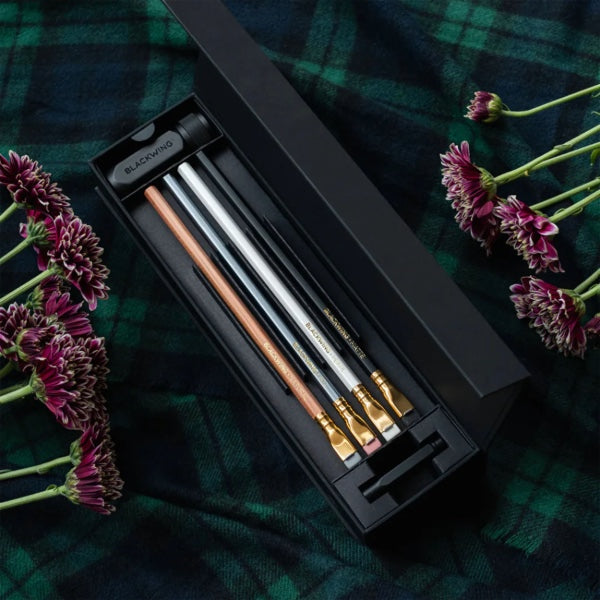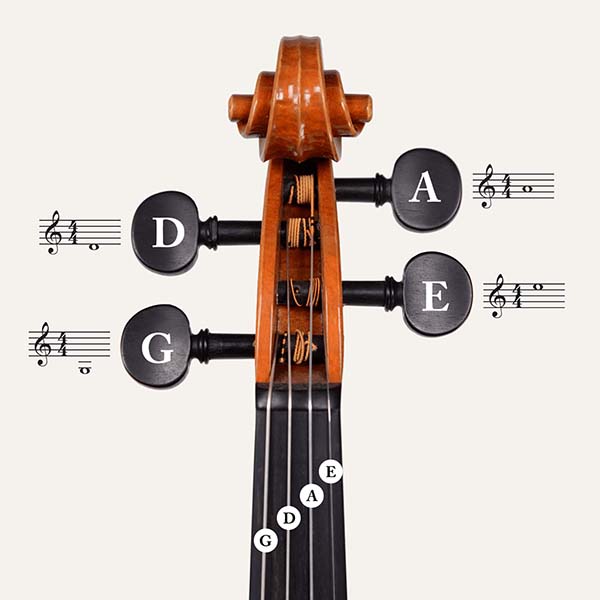As a beginning string player, you’ve probably come to a certain conclusion about fine tuners. It seems fine tuners are for more inexperienced players, not ready for using the pegs to tune. It also may indicate a higher end instrument because you’ve seen professional players with only one fine tuner on the tailpiece for the E-string. However, one day you go to a concert, and you spot some amazing musicians sporting four fine tuners on their fiddles. The violins are gorgeous, and the players clearly aren’t students, so what gives? Why do some string instruments have one fine tuner, while others have four? Should you use fine tuners or not?
String Material
While it definitely makes sense that as you advance, you may not need to use fine tuners as often; that’s not all. They are a relatively new invention. Designed for a specific purpose -- to make it easier to tune steel strings.
Prior to the 1900s, strings were made out of “catgut.” No, not actual cat guts! Well, the reality isn’t much better. Back in the day, people made strings out of sheep and lamb guts, and sometimes, a mixture of other animal muscles and connective tissues. As you can imagine, gut strings were really flexible and stretchable. Therefore, pegs did the job of finding the accurate open string pitches just fine. But, when metal was introduced to the string industry -- steel, in particular -- in the late 1800s and early 1900s, a problem arose.
 Steel is not as malleable as guts and connective tissue. One turn too much in the peg caused the string to snap. Despite this issue, metal and steel strings became all the rage in the string musician community which gave birth to a new invention -- the fine tuner. The fine tuner stretched the metal strings in small increments to avoid breakage. For steel strings, you only have to turn the pegs and fine tuners very little to change the pitch. This makes steel material more desirable due to the ease of tuning. It takes less time to get to the pitch you need. Fine tuners also pleased people who used synthetic and gut strings. They didn’t have to fool around with the pegs as much.
Steel is not as malleable as guts and connective tissue. One turn too much in the peg caused the string to snap. Despite this issue, metal and steel strings became all the rage in the string musician community which gave birth to a new invention -- the fine tuner. The fine tuner stretched the metal strings in small increments to avoid breakage. For steel strings, you only have to turn the pegs and fine tuners very little to change the pitch. This makes steel material more desirable due to the ease of tuning. It takes less time to get to the pitch you need. Fine tuners also pleased people who used synthetic and gut strings. They didn’t have to fool around with the pegs as much.
When steel strings first came out, they were usually a combination of gut and steel strings with the E-string being the metal one. Therefore, the fine tuner was often just needed on the E-string, hence, one fine tuner as opposed to all four. But as metal strings became more popular, people started to want all four metal strings and thus fine tuners on all strings.
One thing persisted, though. Higher end instruments, generally, came with gut or more expensive strings. Steel strings were cheap and used on student instruments. Therefore, steel strings and fine tuners became associated with the value of the instrument. And even when steel strings became more popular and well-made, the tradition of leaving only one fine tuner for the E-string on more expensive instruments stuck. Therefore, the amount of fine tuners you see on a violin is more a matter of tradition and preference than anything else.
Sound Quality
When using fine tuners, think about how it might affect your instrument’s tone. Ease of tuning and getting to the most accurate pitch are the major benefits of these little contraptions.
There is a caveat, though. Adding them to just any tailpiece could lessen your instrument’s tone quality, lowering the sound projection. It’s best to get tailpieces with built-in fine tuners. We have several options here at Fiddlershop. Browse our online store or give us a call for more information.








5 comments
Kevin E Ready
The egalitarian view of having four fine-tuners portrayed in this article is belied by the fact that not a single professional violin on Fiddlershop’s site has four fine-tuners. It seems that your professional customers take a dim view of a pro using a fine-tuner on any but the E String. Sometimes looks mean everything.
The egalitarian view of having four fine-tuners portrayed in this article is belied by the fact that not a single professional violin on Fiddlershop’s site has four fine-tuners. It seems that your professional customers take a dim view of a pro using a fine-tuner on any but the E String. Sometimes looks mean everything.
Fiddlershop
Hi Mitch!
Is there any way you can send us some pictures to support@fiddlershop.com? It sounds like you might have to change tailpieces or buy different fine tuners. Thanks :)
Hi Mitch!
Is there any way you can send us some pictures to support@fiddlershop.com? It sounds like you might have to change tailpieces or buy different fine tuners. Thanks :)
Mitch Groethe
I have a couple of older violins that I am restoring. I got fine tuners and they did not work. they seem to big. what should I use?
I have a couple of older violins that I am restoring. I got fine tuners and they did not work. they seem to big. what should I use?
BannJoe
That is exactly what Adam wrote in his article, he just used some light humor in his writing and wrote in a narrative form so you would feel like he was talking with you not at you. Perhaps before you take time out of your busy days of correcting people who don’t use the Casanova method of tuner peg and fine tuner usage, and before you berate a writer than castigate him for never tuning an instrument by saying “If you’d ever tuned an instrument”, so basically attacking the writer along with his writing style, (which he kindly wrote for everyone to read if they so choose) maybe, just maybe, you should use that time to read over the article 2,3, maybe even 4 different times using a whole host of different tones and or attitudes throughout the piece of writing to get a sense of what the writer’s mood was. If after reading it a few times you still can’t shake those negative feelings regarding the article, perhaps instead of being the masochists dick who not only insists on tuning with only pegs, but also insists on calling out the writer of an article by being a negative Nancy you turn that energy into something positive. Maybe thank them for their time and effort which they put forth so you could occupy your mind with some educational reading. Again, just a thought. I get the feeling you are hostel towards fine tuners. I think its time you forgive the fine tuners and you both just part ways.
That is exactly what Adam wrote in his article, he just used some light humor in his writing and wrote in a narrative form so you would feel like he was talking with you not at you. Perhaps before you take time out of your busy days of correcting people who don’t use the Casanova method of tuner peg and fine tuner usage, and before you berate a writer than castigate him for never tuning an instrument by saying “If you’d ever tuned an instrument”, so basically attacking the writer along with his writing style, (which he kindly wrote for everyone to read if they so choose) maybe, just maybe, you should use that time to read over the article 2,3, maybe even 4 different times using a whole host of different tones and or attitudes throughout the piece of writing to get a sense of what the writer’s mood was. If after reading it a few times you still can’t shake those negative feelings regarding the article, perhaps instead of being the masochists dick who not only insists on tuning with only pegs, but also insists on calling out the writer of an article by being a negative Nancy you turn that energy into something positive. Maybe thank them for their time and effort which they put forth so you could occupy your mind with some educational reading. Again, just a thought. I get the feeling you are hostel towards fine tuners. I think its time you forgive the fine tuners and you both just part ways.
Casanova
“It seems fine tuners are for more inexperienced players, not ready for using the pegs to tune.”
This is nonsense. Using pegs and using fine tuners to tune isn’t mutually exclusive. Pegs are used for large adjustments in pitch, and fine tuners are use for small adjustments in pitch. If you’d ever tuned an instrument, you’d know that pegs are finicky and often slip due to inadequate friction of the peg in the hole to counterbalance the tension of the strings. That’s why when small adjustments in pitch are necessary, it’s rather idiotic to try to adjust that with a peg, which could easily slip and lose an entire octave of pitch. Fine tuners are just so much more pragmatic; only masochists insist on tuning with only pegs, even for small adjustments in pitch.
“It seems fine tuners are for more inexperienced players, not ready for using the pegs to tune.”
This is nonsense. Using pegs and using fine tuners to tune isn’t mutually exclusive. Pegs are used for large adjustments in pitch, and fine tuners are use for small adjustments in pitch. If you’d ever tuned an instrument, you’d know that pegs are finicky and often slip due to inadequate friction of the peg in the hole to counterbalance the tension of the strings. That’s why when small adjustments in pitch are necessary, it’s rather idiotic to try to adjust that with a peg, which could easily slip and lose an entire octave of pitch. Fine tuners are just so much more pragmatic; only masochists insist on tuning with only pegs, even for small adjustments in pitch.